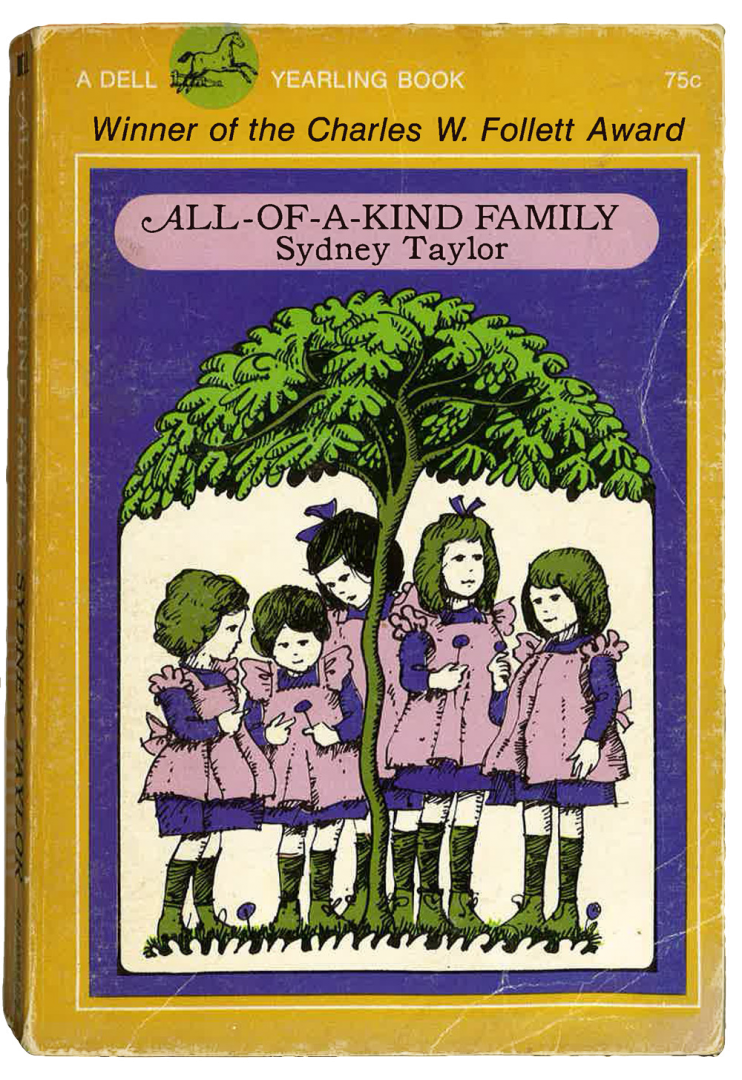Religion in Family Stories
One of the central themes of Jewish family stories has been Jewish religion. As Jews became integrated into American culture, they used American pedagogical formats, like textbooks (see, for example, the 1918 text First Grade in Hebrew) to instruct children in Hebrew, to teach them stories about the Bible, and about Jewish history.
Jews also used modern children's literature to teach children about Jewish holidays and beliefs: popular series like those inaugurated by The Adventures of K'tonton (1935) by Sadie Rose Weilerstein and All-of-a-kind Family (1951) by Sydney Taylor used humor, pathos, and relatable fictional families to engross generations of children in the details of Jewish observance.
It was not only children who needed to learn about religion, moreover: as Jews integrated into American culture, cookbooks and advice manuals increasingly presumed that Jewish adults in the United States needed instruction on the details of Judaism, as well. Florence Greenbaum's Jewish Cook Book (1918), one of the most famous traditional Jewish cookbooks in the United States, featured explicit "Rules for Kashering" (kashering is the process by which meat is rendered kosher, and thus fit to eat, according to Jewish dietary rules). In the Jewish Holiday Cook Book (1955), Leah Leonard did not simply provide recipes for holiday meals; she offered detailed descriptions of the Jewish holidays' meanings and dates in the Jewish calendar. And The Jewish Catalog (1973), a product of the Jewish counterculture in the 1970s, featured vivid photographic illustrations of how to kasher meat.
Related resources
Browse picture book highlights on the Center for Jewish History's library subject guide to children's lives and literature
Jewish Children's Literature by Linda R. Silver.




